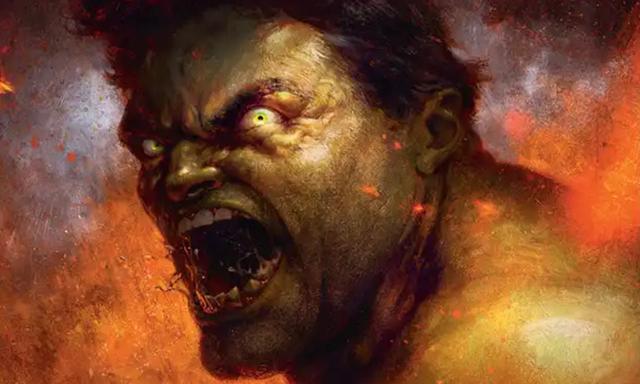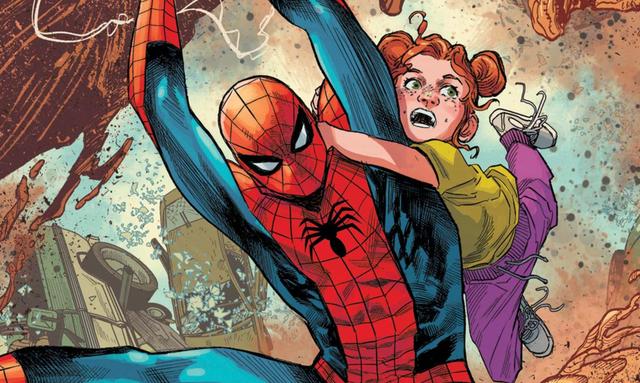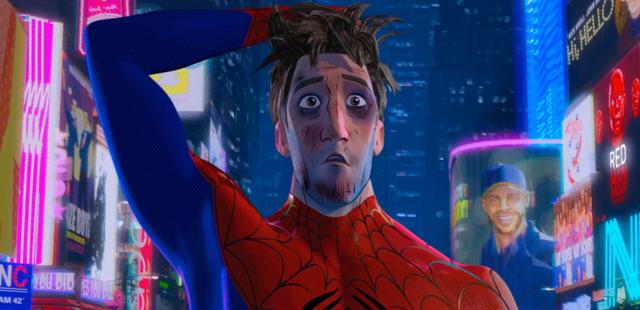If you click on a link and make a purchase we may receive a small commission. Read our editorial policy.
Why it hurts to be the Dark Knight
While Batman is one of the most iconic superheroes in the DC Universe, he pays a bloody price to fight against gods and monsters. Here’s why it hurts to be the Dark Knight.

Bruce Wayne may have spent years training his body and mind to the point of human perfection, but that doesn’t mean that Batman walks away from his never-ending war against crime completely unscathed. From common criminals getting in lucky shots on the Dark Knight to some of the DC Universe’s most fearsome supervillains beating Batman within an inch of his life, being the Caped Crusader is a thoroughly painful endeavor. As the latest war for the soul of Gotham City rears its ugly head in Detective Comics #1064, by Ram V and Rafael Albuquerque, Bruce undergoes a check-up from an outside physician for the first time in years, revealing just how much his superhero double life has cost his body.
We're presented with a bloody walk down memory lane recounting some of the most grievous injuries endured by Batman across his extensive comic book history, from incidents that left visible scars to harrowing events that left the Dark Knight seemingly sidelined forever and, in some cases, presumed dead. And while Batman may just be a man, here are the unorthodox medical procedures that brought the Caped Crusader back in fighting shape as one of the most formidable superheroes in the DCU.
Bruce Wayne’s Overdue Physical

With Bruce’s longtime personal physician and surrogate father figure Alfred Pennyworth still presumed dead – despite a surprise potential resurrection in the pages of Batman vs. Robin – in Detective Comics, Bruce decides to undergo a checkup at Gotham Central Hospital. This medical visit is informed by Bruce spontaneously receiving nightmarish visions of Barbatos, the dark bat god who resided in the land that Gotham was founded upon. Though Bruce is ultimately given a clear bill of health, his physician lists a whole list of ailments enough to make any health-conscious individual wince.
The doctor is able to identify two dozen serious bone fractures, with at least half of the healed bones not setting properly. In addition to the broken bones, the doctor observes that Bruce has a lengthy history of harrowing physical damage, with scars visible as Bruce puts his shirt back on. When the doctor advises Bruce avoid dangerous and stressful situations to prevent any future visions, attributing the phenomena to panic attacks, we see that Bruce has already left, seizing the opportunity to continue to strike fear into the hearts of criminals, sharing his physical pain with those who openly act on the wrong side of the law.
Batman: A Superhero Debt Paid in Blood

With his rigorous training stretching from the freezing heights of the Himalayas to grueling martial arts fights all over the world, Bruce was no stranger to pain before he returned to Gotham to fight crime as Batman. However, Bruce’s first attempt to fight crime was a decided disaster, with Bruce stabbed in the leg and nearly bleeding to death before Alfred stepped in to save his life, as chronicled in Frank Miller and David Mazzucchelli’s Batman: Year One. After creating the cowled alter ego Batman, Bruce’s crimefighting crusade became considerably more successful but not without the occasional life-threatening injury along the way, with each wound serving their own bloody reminder of the price that Bruce pays to be a superhero.
In Jeph Loeb and Jim Lee’s Hush, Catwoman sees Batman outside of his superhero costume and is stunned by the sheer amount of scar tissue that is shown across his body. Among the scarring seen in the storyline is a stab wound from the Joker, a gunshot wound inflicted by Two-Face, and a set of scratched scars left by Catwoman herself in an early skirmish between the two characters. Many Batman comic stories feature the Dark Knight pushing himself through pain and punishment in order to save the day, with quieter moments like the scene in Hush reflecting on the long-term cost to his body.
There are occasions where the injuries Batman has endured have left his crimefighting future in doubt and, on even rarer occasions, left him presumed dead by the rest of the Bat-Family. In the 1993 crossover event Knightfall, the cunning supervillain Bane deduced Batman’s true identity after having him run a gauntlet of facing his escaped foes. Bane ambushed Batman back at Wayne Manor, beating him mercilessly before breaking his spine and discarding the defeated Dark Knight in the streets of Gotham.
Grant Morrison and Tony S. Daniel’s run on Batman culminated in the storyline Batman R.I.P., with the evil Doctor Simon Hurt injecting Bruce with a toxic cocktail that temporarily broke Batman’s mind before burying him alive. Batman would recover and defeat Hurt shortly before the 2008 crossover event Final Crisis, with the Caped Crusader blasted by Darkseid’s Omega Beams and presumably killed only to have been sent hurtling through time by the New God. Recently, Batman was again apparently killed, alongside the rest of the Justice League, in the lead-up to the crossover event Dark Crisis on Infinite Earths, and instead eventually revealed to have been imprisoned in a pocket universe by the multiversal villain Pariah.
The Miraculous Medical History of Bruce Wayne

In order to keep his superhero activities a secret, Bruce relies on Alfred to perform the majority of the medical needs, with Alfred drawing from his past experiences as a combat surgeon to sew any lacerations and set any broken bones that Batman and the rest of the Bat-Family endure. And though this has helped keep Batman in the fight for years, there are instances when Batman is forced to rely on outside expertise in order to survive and return to full strength. Batman also has an automated medical system within the Batcave and has, on occasion, received medical treatment from fellow superheroes, including Doctor Mid-Nite and Mister Terrific.
In Hush, after falling and fracturing his skull, with a bone shard stabbing into his brain, Batman was operated on by his childhood friend Thomas Elliot, who has since become one of the most skilled brain surgeons in the world. This all quietly played right into Elliot’s plans, with the man secretly harboring a grudge against Bruce for years while developing his supervillain persona as the sinister Hush to destroy Batman’s world, with Elliot planting a tracker chip during the life-saving operation.
During Morrison and Daniel’s Batman run, the Dark Knight faced off Ra’s al Ghul in a fearsome duel during the storyline 'The Resurrection of Ra’s al Ghul,' seemingly ending with Ra’s stabbing his nemesis with a sword. Before succumbing to his wounds, Batman fell into a nearby Lazarus Pit, emerging completely healed from his injuries while his entire body was rejuvenated and restored from the Lazarus Pit’s magically healing properties.
The most unorthodox medical treatment Batman has received to date occurred in the follow-up to 'Knightfall,' with the 1994 storyline 'Knightquest.' Undergoing productively recuperative sessions with the physical therapist Doctor Shondra Kinsolving, Bruce rescued Kinsolving after she was kidnapped by her brother for her mystical healing powers. Kinsolving uses her powers to completely heal Bruce’s shattered spine but, after killing her brother in self-defense, her sanity snaps from the traumatic experience, leaving Bruce with a pyrrhic recovery.
How Bruce’s Painful Side Hustle Has Been Depicted

The grievous cost of being Batman is something that has been carried over to multimedia adaptations of the character. The animated series Batman Beyond showed an older Bruce relying on a cane for movement with the injuries he suffered during his lengthy tenure as Batman finally catching up to him.
Christopher Nolan’s Dark Knight film trilogy prominently leaned into the pain associated with being Batman, with 2012’s The Dark Knight Rises showing Bruce similarly relying on a cane after the injuries he suffered at the end of The Dark Knight. In a loose adaptation of Knightfall, Bane breaks Bruce’s back after a brutal battle, with Batman’s spine miraculously reset, allowing for a full recovery without further explanation.
Bruce has enough training and resources to stand among the mightiest superheroes in the DCU and become a fixture on the Justice League. However, for all the incredible feats that Batman is capable of, he is still just a man and vulnerable to the same life-threatening injuries that could be inflicted on common people. Batman has more than paid the price for his superhero double life and yet, for all the pain he has endured, he tirelessly returns to fight crime and save the day every night.
Detective Comics #1064 is on sale now from DC. The issue is written by Ram V, illustrated by Rafael Albuquerque, colored by Dave Stewart, and lettered by Ariana Maher, with a back-up story written by Si Spurrier, illustrated by Dani, colored by Stewart, and lettered by Steve Wands. The story continues in Detective Comics #1065, on sale Oct. 25.
Want a different take on Batman? Well, you're in luck-- Batman: Wayne Family Adventures is heading back to WEBTOON with a second season!
Follow Popverse for upcoming event coverage and news
Find out how we conduct our review by reading our review policy
Let Popverse be your tour guide through the wilderness of pop culture
Sign in and let us help you find your new favorite thing.
















Comments
Want to join the discussion? Please activate your account first.
Visit Reedpop ID if you need to resend the confirmation email.